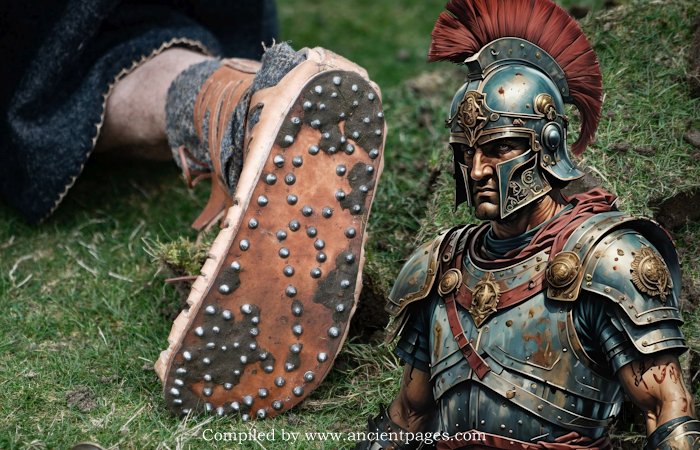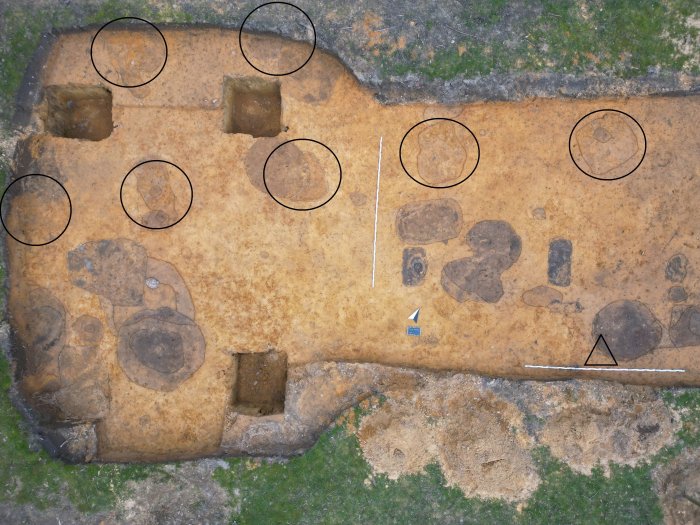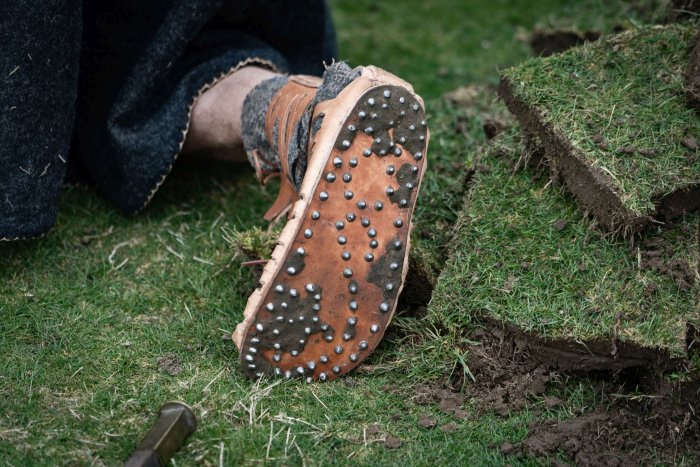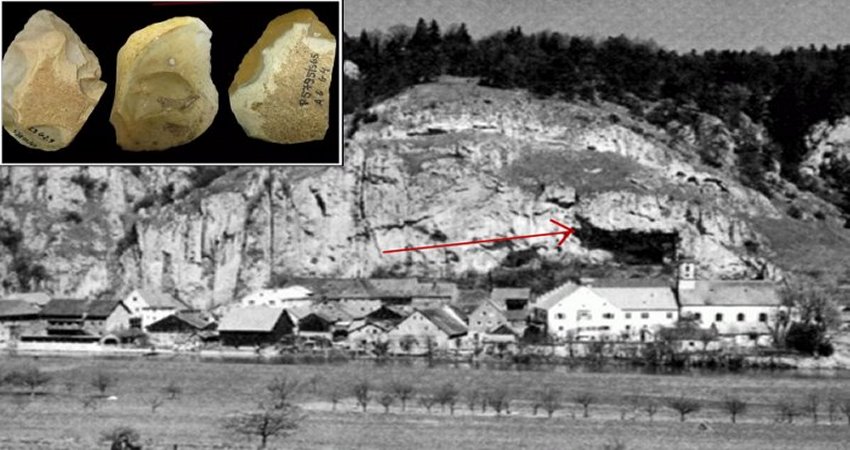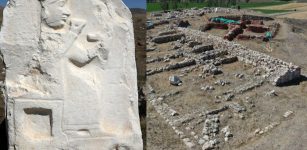Ancient Roman Sandal With Nails And Game Pieces Found Under A Playground In Germany
Jan Bartek – MessageToEagle.com.com – During ongoing construction work on a playground near the fortifications of the Roman camp in Haltern am See, Germany, a team of archaeologists made some interesting discoveries with the help of a metal detector. They found not only a Roman glass game piece but also two baking ovens, remains of caligae (marching boots of Roman legionaries), and eight post holes from the wood-earth wall.
The most surprising find was in a waste pit, where the archaeology team from the Westphalia-Lippe Regional Association (LWL) discovered an ancient Roman sandal with nails. A similar well-preserved sandal sole with intact nails was found earlier this year in Bavaria. The so-called caligae were predominantly worn by Roman soldiers during the Roman Empire.
“A legionnaire tossed his worn-out caliga into a waste pit for disposal. The shoe leather has since completely decomposed in the sandy soil of Haltern. However, the nails from the shoe’s sole have remained intact,” Dr. Bettina Tremmel, scientific advisor for provincial Roman archaeology at the LWL Archaeology for Westphalia.
The drone image shows the excavation area. The circles mark the post holes of the wood-earth wall, and the arrow shows where the shoe nails were found. Photo: LWL/T. Ciesler
The archaeologists tracked these down using a pinpointer, a compact mini metal detector. “In one place, we found shoe nails lying close together and used the pinpointer to continue the search. This pinpointed an area of 20 by 20 centimeters,” says Dr. Tremmel.
The archaeologists then recovered the entire block of earth to preserve the position of the small metal finds and ensure they could be transported without damage.
“The shoe must have been relatively small and turned over in the heel area. There is a 90-degree bend there,” says LWL restorer Andreas Weisgerber.
One of the post holes of the wood-earth wall. The slightly brownish trace of the post can be seen in the middle. Photo: LWL/B. Tremmel
“We also checked for preserved organic matter on the iron oxides. Unfortunately, this was not the case. Judging by the length of the nail thorn, the sole was about 0.8 centimeters thick.” “The soles of the Caligae shoes consisted of three layers of leather, held together by small, hand-forged nails. The tips of the nails were folded over on the top of the sole,” adds Tremmel.
Restorer Andreas Weisgerber plasters a block of earth in order to recover it as a whole – with the shoe nails in it. Photo: LWL/B. Tremmel
“As the legionaries did not wear socks, walking on the 60 nails hammered into each sole must have been almost like a massage,” she believes.
“We were surprised by the construction work on the playground on the Roman road in the summer,” says Tremmel in a press release.
The polished nails of the former marching boot. Photo: LWL/J. Mühlenbrock
The nailed sole of a reconstructed caliga. Photo: LWL/P. Jülich
The archaeologist organized archaeological investigations to coincide with the construction activities, anticipating discoveries or remnants of the Roman camp’s construction at this site. This area is situated on a segment of the wood-earth wall of the Roman camp, which has previously been reconstructed at the west gate, specifically at the Roman construction site Aliso.
See also: More Archaeology News
“It was, therefore, clear that we would come across archaeological findings,” Tremmel continued. Indeed, in addition to other well-preserved post holes of the wood-earth wall, the archaeologists located two pits where bread was baked about 2,000 years ago. Additionally, several waste pits were visible in the ground.
Written by Jan Bartek – MessageToEagle.com – AncientPages.com Staff Writer

